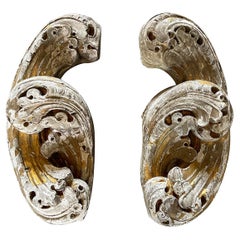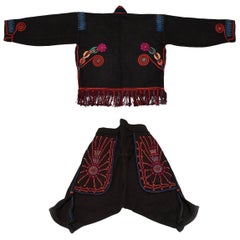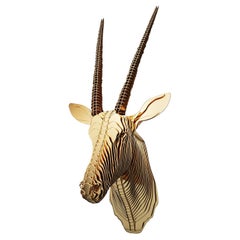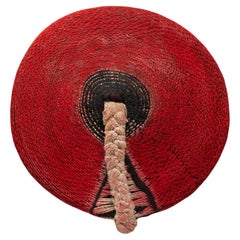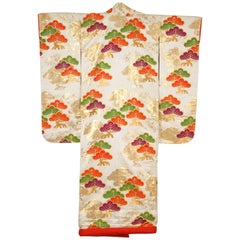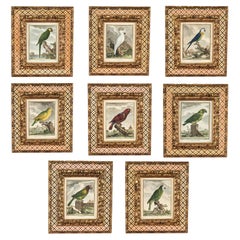Hand-Crafted Decorative Art
Late 17th Century Portuguese Baroque Antique Hand-Crafted Decorative Art
Pine
Mid-20th Century Guatemalan Spanish Colonial Hand-Crafted Decorative Art
Wool
21st Century and Contemporary French Hand-Crafted Decorative Art
Brass
Mid-20th Century South African Tribal Hand-Crafted Decorative Art
Cotton
20th Century Japanese Japonisme Hand-Crafted Decorative Art
Silk
18th Century French Louis XV Antique Hand-Crafted Decorative Art
Wood, Paint
19th Century French Folk Art Antique Hand-Crafted Decorative Art
Wood
Mid-20th Century English Georgian Hand-Crafted Decorative Art
Brass
2010s Organic Modern Hand-Crafted Decorative Art
Wool
17th Century Peruvian Antique Hand-Crafted Decorative Art
Wood, Paint, Giltwood
Early 19th Century Italian Empire Antique Hand-Crafted Decorative Art
Bronze, Ormolu
1970s Japanese Japonisme Vintage Hand-Crafted Decorative Art
Canvas, Silk
2010s Italian Hand-Crafted Decorative Art
Paper, Paint
Mid-20th Century Moroccan Moorish Hand-Crafted Decorative Art
Wood
Early 20th Century European Arts and Crafts Hand-Crafted Decorative Art
Majolica, Mirror, Oak
21st Century and Contemporary Italian Neoclassical Hand-Crafted Decorative Art
Wood, Paper
Late 20th Century American Adirondack Hand-Crafted Decorative Art
Cowhide
Late 20th Century American Mid-Century Modern Hand-Crafted Decorative Art
Metal
2010s American Organic Modern Hand-Crafted Decorative Art
Ceramic, Cotton
20th Century American Mid-Century Modern Hand-Crafted Decorative Art
Copper, Enamel
Early 20th Century Chinese Hand-Crafted Decorative Art
Silk
2010s English Arts and Crafts Hand-Crafted Decorative Art
Silk
21st Century and Contemporary Croatian Organic Modern Hand-Crafted Decorative Art
Wood, Walnut
Late 18th Century Swedish Gustavian Antique Hand-Crafted Decorative Art
Mirror, Pine, Giltwood
Late 19th Century French Napoleon III Antique Hand-Crafted Decorative Art
Metal
Late 20th Century Spanish Spanish Colonial Hand-Crafted Decorative Art
Ceramic
1840s Italian Neoclassical Antique Hand-Crafted Decorative Art
Gold Leaf
1960s Vintage Hand-Crafted Decorative Art
Mother-of-Pearl
20th Century Indian Anglo Raj Hand-Crafted Decorative Art
Cotton
21st Century and Contemporary Japanese Meiji Hand-Crafted Decorative Art
Gold
Mid-20th Century French Modern Hand-Crafted Decorative Art
Metal
Mid-20th Century French Mid-Century Modern Hand-Crafted Decorative Art
Wood
18th Century Swedish Gustavian Antique Hand-Crafted Decorative Art
Glass, Mirror, Giltwood
1990s Japanese Showa Hand-Crafted Decorative Art
Bamboo, Paper
Early 20th Century Moroccan Moorish Hand-Crafted Decorative Art
Ceramic
18th Century French Antique Hand-Crafted Decorative Art
Faience, Paint
2010s Turkish Modern Hand-Crafted Decorative Art
Wood, Oak
Late 19th Century French Antique Hand-Crafted Decorative Art
Canvas, Giltwood
20th Century Japanese Japonisme Hand-Crafted Decorative Art
Silk
16th Century Belgian Gothic Antique Hand-Crafted Decorative Art
Oak
Late 20th Century Spanish Spanish Colonial Hand-Crafted Decorative Art
Ceramic
19th Century French Victorian Antique Hand-Crafted Decorative Art
Natural Fiber
20th Century Italian Baroque Revival Hand-Crafted Decorative Art
Porcelain
Early 20th Century German Folk Art Hand-Crafted Decorative Art
Wood, Paper
Early 20th Century European Arts and Crafts Hand-Crafted Decorative Art
Metal, Brass
Early 20th Century French Hand-Crafted Decorative Art
Plaster
1930s French Art Deco Vintage Hand-Crafted Decorative Art
Acrylic, Plywood
17th Century Belgian Antique Hand-Crafted Decorative Art
Wool, Silk, Paint
2010s Colombian Hand-Crafted Decorative Art
Cast Stone
18th Century Swedish Gustavian Antique Hand-Crafted Decorative Art
Pine
Mid-20th Century Uzbek Suzani Hand-Crafted Decorative Art
Cotton, Silk
1950s German Mid-Century Modern Vintage Hand-Crafted Decorative Art
Ceramic, Pottery
19th Century Japanese Antique Hand-Crafted Decorative Art
Porcelain, Paint
Late 19th Century French Antique Hand-Crafted Decorative Art
Canvas, Giltwood
1960s Swedish Mid-Century Modern Vintage Hand-Crafted Decorative Art
Ceramic, Stoneware
Mid-20th Century European Mid-Century Modern Hand-Crafted Decorative Art
Teak
Early 20th Century French Hand-Crafted Decorative Art
Plaster
19th Century Indian Anglo Raj Antique Hand-Crafted Decorative Art
Brass
Mid-20th Century French Country Hand-Crafted Decorative Art
Iron
2010s American Organic Modern Hand-Crafted Decorative Art
Ceramic, Stoneware
Read More
At Colonial Williamsburg, Everything Old Is New Again
With the help of a new director, the Virginia institution's folk art and decorative arts museums are undergoing extensive upgrades.
New York’s Hirschl & Adler Showcases the American Workmanship and Design Panache of Neoclassical Treasures
The gallery's latest exhibition proves that museum-quality pieces entice and inspire, whether in traditional or more modern interiors.
